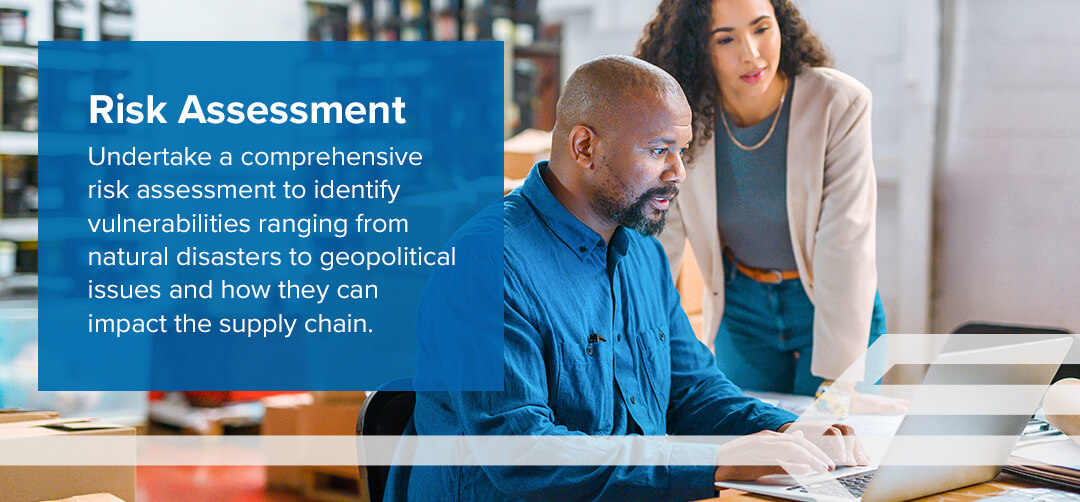
Building supply chain resilience is paramount in a dynamic business landscape where disruptions run rife. Organizations may encounter many risks, from natural disasters to unforeseen market changes. To mitigate these, businesses must compile effective strategies encompassing diverse facets of supply chain management.
A resilient supply chain in this ever-evolving business landscape is more than a one-and-done strategy. It is an ongoing commitment that adapts annually, even seasonally, to help organizations thrive amid uncertainty. Here’s how to achieve supply chain resilience.
What Is Supply Chain Resilience?
A resilient supply chain balances cost and risk to quickly bounce back from risk-related disruptions. Having a robust supply chain means the organization relies on the following four facets.
- Visibility: Monitoring various patterns and events in the supply chain, including performance, compliance, start-to-end observations and tracking usage patterns to improve demand forecasting.
- Collaboration: Nurturing a symbiotic relationship with each stakeholder includes collaborative product design, planning and accessing supply chain data.
- Flexibility: Quickly adapting to sudden changes while maintaining operational costs involves identifying alternate suppliers and agility in re-routing materials or production to meet new demands.
- Control: Accessing planned processes to prevent disruptions before they happen lets you continue to develop products that meet organizational standards and protect product flow while adhering to legal and social compliance policies.
Why Is Supply Chain Resilience Important?
Risk exposure comes from various external and internal factors and can lead to production shutdowns, a decrease in purchases and logistics interruptions across ports, air cargo, road and rail. Organizations can quickly pivot around challenges with strategies in place to ensure business continuity and minimize disruptions.
What Are the Benefits of Supply Chain Resilience?
Supply chain disruptions can cause trouble in all business areas — including the bottom line. Strategies that create a supply chain with the ability to bounce back from obstacles incur the following benefits.
- Better risk management: By proactively analyzing potential risks, your organization can prepare to mitigate these hindrances’ impact.
- Sustainable growth: Resilience promotes long-term growth and viability, especially with sustainable business practices.
- Business continuity: Maintaining consistent operations when disruptions occur allows businesses to keep their market share and protects customer satisfaction.
- Cost optimization: The resilient supply chain contributes to cost savings with effective inventory management, operations and less downtime.
- Stronger supplier relationships: Collaborating with suppliers helps create a more robust supply chain and boosts collaboration and trust with distributors.
- Flexibility and responsiveness: Resilience also extends to an organization’s agility in responding to customer demands.
- Competitive advantage: Businesses can enjoy increased market share and brand reputation by better handling disruptions.
How to Build a Resilient Supply Chain
The primary secret to success is to have a selection of strategies that work to reduce vulnerabilities and boost good governance.
Risk Assessment

Undertake a comprehensive risk assessment to identify vulnerabilities ranging from natural disasters to geopolitical issues and how they can impact the supply chain. This appraisal will become the foundation for other strategies in the resilience portfolio. Various supplier risks include the following.
- Legal risks: Civil lawsuits, contractual misuse, non-compliance and misuse of intellectual property.
- Reputational risks: Suppliers not adhering to environmental, social and governance principles can lead to product safety concerns.
- Financial risks: Supplier financial instability can lead to an inability to meet increasing demands.
- Operational risks: These include quality control issues and risks of disruptions and delays.
Diversification
Resilience in the supply chain starts with diversification. Organizations must develop flexibility and lower redundancy in various operational areas to lower the impact of known and unknown risks. At the same time, these strategies must work to increase the agility needed to take on challenges. Overreliance on one source for supplies, manufacturing or distribution is a risk. Use multiple suppliers and look into nearshoring and onshoring options to shorten the supply chain.
Inventory Management
A resilient supply chain does not over- or understock. It carries cycle stock to meet demand and additional buffer stock to meet demand surges. Uphold safety stock levels to account for potential disruptions. Additionally, use extensive data analytics to conduct demand forecasting, which can help reduce excess inventory while ensuring enough stock to meet sudden demand surges. This strategy may require organizations to narrow their stock-keeping units. However, the benefits are well worth the effort.
- Simplifies inventory distribution: With a smaller warehouse footprint comes the opportunity to reduce final mile time in transit and exceed customer delivery expectations.
- Margin increase: Businesses can increase profitability and promote sustainability by removing low-demand SKUs.
- Lower storage costs: Organizations can consider stocking more high-demand products when fewer SKUs occupy warehouse space.
Technology Integration
Use Internet of Things sensors, artificial intelligence and blockchain for real-time visibility to anticipate potential issues for faster response times. These tools also give all stakeholders access to data-driven and collaborative decision-making.
Blockchain technology will enhance transparency in operations, confirming product authenticity and keeping records of end-to-end transactions. Automation in operations streamlines warehousing processes and reduces safety risks for employees to keep the supply chain more adaptable in disruptive times. Lastly, cloud-based platforms support collaborative efforts, facilitating stakeholder communication and information sharing.
Collaboration and Communication
Building robust relationships with suppliers and establishing open communication creates a collaborative environment. Collective planning and risk-sharing increase resilience, an ongoing effort that needs continuous adaptation as risks and market dynamics keep evolving.
Sustainable Supply Chain Solutions
Supply chain resilience is vital to protect revenue, brand reputation and customer or investor relationships. By embracing technology, analytics, diversification and collaboration, businesses can fortify their supply chain’s ability to withstand unexpected challenges, securing continuity and customer satisfaction.
EMO Trans offers customized strategies that align with your organizational goals to provide the scalability and experience you need from a supply chain partner. We continually invest in new technologies to improve processes and services and give you a competitive edge. Find the flexibility and communications you need in a global network. Request a quote to learn how we can help boost your business operations.

